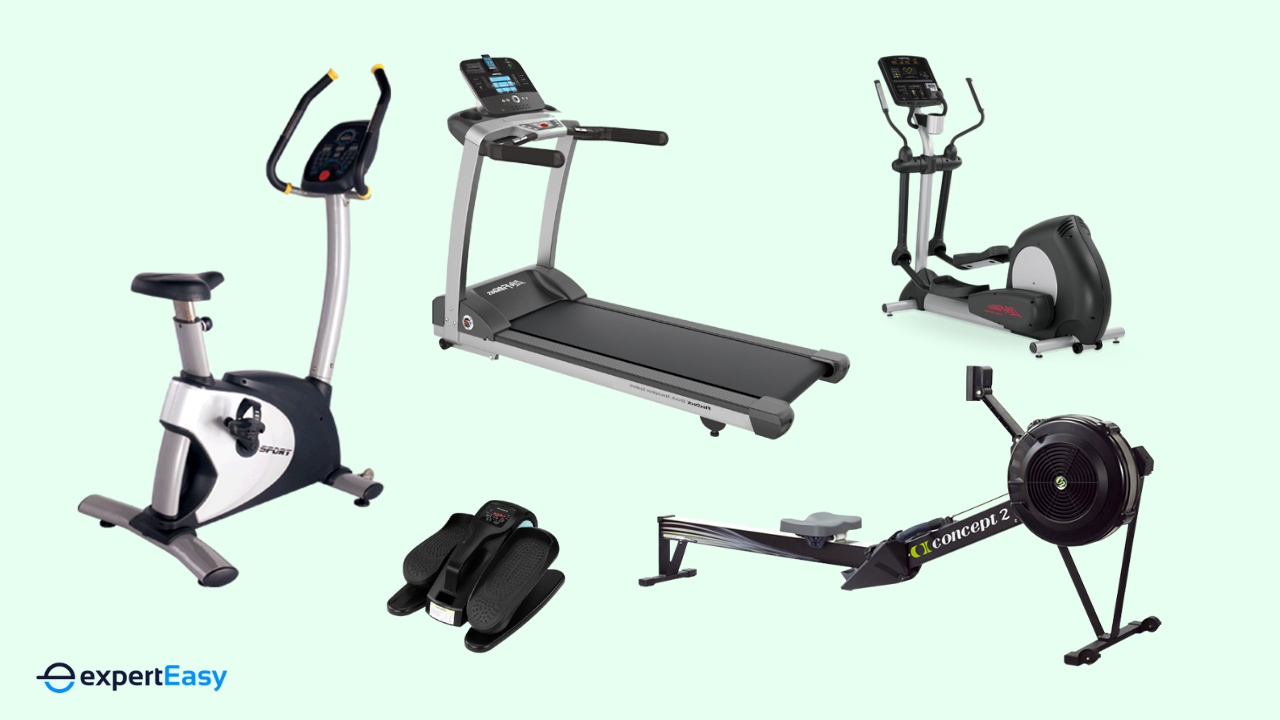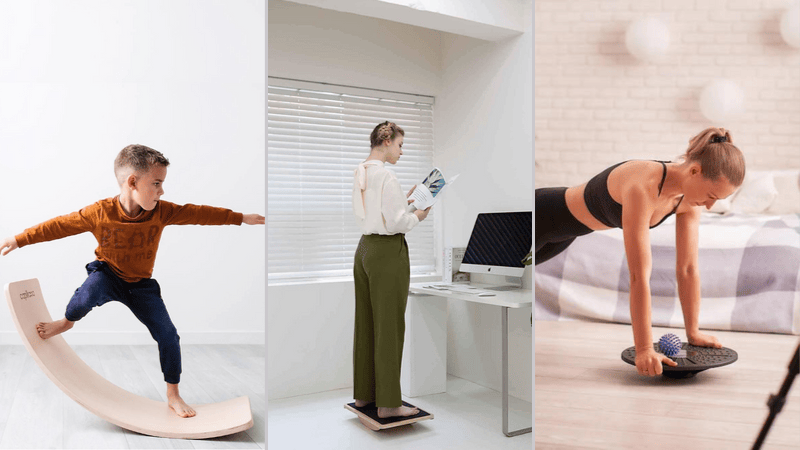With busy lives and sometimes unpredictable weather, having a reliable indoor exercise option is crucial for your well-being. A stationary bike is an excellent home equipment choice for cardiovascular exercises.
Cardio workouts are about finding long-term ways to keep your heart healthy, and in the following sections, we'll discuss why stationary bikes are an excellent choice for cardio.
What is Cardiovascular Exercise?
Cardiovascular exercise, fondly known as 'cardio', is any activity that gets your heart rate up and keeps it there for a prolonged period. Examples of cardio exercises include running, swimming, and cycling. When your heart is strong, it pumps blood more efficiently throughout your body, supplying your muscles and organs with the needed oxygen.
Cardiovascular exercises also help improve lung capacity, reduce the risk of heart disease, manage weight, and even boost mental health. Exercise bikes are great for indoor cardio workouts, but there are endless opportunities for outdoor cardio in Australia– from surfing at Bondi Beach to hiking in the Blue Mountains.
Having a fitness setup at home can be cheap and easy. You can get your home exercise corner ready by making a pick from our list of best home exercise bikes in Australia.
Stationary Bikes and Cardio

Riding a stationary bike is a good way to make your heart healthier. As a form of continuous and rhythmic activity, it helps your body get more oxygen-rich blood. This increase in heart rate is a direct response to the heightened demand for oxygen in working muscles, prompting the heart to pump more blood and, consequently, improving cardiac output.
With consistent use, stationary biking induces physiological changes contributing to cardiovascular fitness. Your heart will be able to pump more blood each time it beats. This process, coupled with improved blood vessel health and flexibility, reduces the risk of atherosclerosis and enhances overall blood vessel function. Over time, your heart rate when you're resting will go down, which shows that your heart and lungs are getting better at their job.
But the benefits don't stop there. Stationary biking also helps your body use oxygen better, makes more energy-producing parts in your cells, and improves your cholesterol levels by increasing the good (HDL) and decreasing the bad (LDL). Plus, regular exercise like this can help control your blood pressure.
Benefits of Stationary Bikes for Cardio
Now you know how a stationary bike improves your cardiovascular health. Below we'll explore seven more benefits of using a stationary bike for cardio.
Pro #1 - Low-Impact Exercise
Unlike running, stationary bikes provide a great cardio workout without putting much strain on your knees, hips, and ankles. This can make them a fantastic option for people with joint issues or those recovering from injuries. You can get your heart up to speed without straining your joints.
Pro #2 - Convenience at its Best
With a stationary bike, you won’t have to worry about the scorching Aussie sun or a sudden downpour. You can pedal away while watching the footy or while your children play nearby. The convenience does not compromise your fitness game plan; rather, it bolsters it.
Pro #3 - Adjustable Intensity
Whether you’re just starting or you’re as fit as a Mallee bull, stationary bikes can be adjusted to suit your fitness level. You can control the resistance and speed, making your workout as easy or challenging as possible.
Pro #4 - Boosts Heart Health
Regular use of a stationary bike helps strengthen your heart and lungs, improving your body’s ability to use oxygen. Over time, this can lead to a lower resting heart rate and reduced blood pressure, as explained above.
Exercising your heart also increases its ability to pump blood, and that means your organs and cells get an ample supply of oxygen. More importantly, good heart health translates to good general body health.
Pro #5 - Effective for Weight Management
Stationary biking helps you lose extra body fat by burning calories during exercise, which can reduce body fat.
If you burn more calories than you have readily available from carbohydrates, your body will start to burn fat for energy, leading to weight loss. Losing extra body fat is crucial for heart health. Excess body fat, especially around the waist, can increase the risk of heart disease and other health problems.
Pro #6 - Muscle Strengthening
While giving your heart a good workout, stationary exercise bikes also target your quads, hamstrings, calves, and glutes. It’s a win-win for your cardio health and muscle strength.
Pro #7 - Mental Health Benefits
Just like any good cardio workout, pedalling on a stationary bike releases endorphins, feel-good hormones that help reduce stress and anxiety. It’s a great way to clear your mind after a stressful day.
Stationary Bikes vs. Other Cardio Equipment

It's not just about picking the best tool but understanding how each one fits into your lifestyle and fitness goals. As a rule of thumb, choose workout equipment that infuses excitement and innovation into your fitness routine. Let’s compare the stationary bike with other gym favourites:
Stationary Bike vs. Treadmill
Treadmills are ideal for simulating a natural running or walking motion, offering a high-impact cardio workout. They're great for improving bone density but can be tough on the joints, especially for those with knee or back issues.
Stationary bikes, on the other hand, provide a low-impact alternative, reducing the risk of joint injuries while still offering a solid cardio workout. Exercise bikes also tend to be a bit quieter.

Stationary Bike vs. Elliptical
The elliptical is a low-impact exercise machine that simulates walking, running, or stair climbing while using the upper and lower body. It's easier on the joints than a treadmill and provides a balanced workout.
On the other hand, the stationary bike is great for a lower body and cardiovascular workout. It's a weight-supported exercise, which might make it slightly easier than an elliptical workout since it uses fewer muscles. However, the intensity of the workout ultimately depends on how hard you're pushing yourself, the type of workout you're doing, and the resistance.
If you want to build leg strength and endurance, the stationary bike could be a better alternative. However, both machines can give you a great cardio workout and are easier on your joints than running outside.

Stationary Bike vs. Rowing Machine
Rowing machines offer a full-body workout, targeting both cardio and strength. They work a combination of primary and secondary muscles, giving you a well-rounded workout for the entire body. However, they can be a bit challenging for beginners or those not used to the rowing motion.
Stationary bikes, in contrast, are more accessible and focus specifically on cardiovascular health and lower body strength. They work your lower body, specifically your glutes, hips, knees, calves, and ankles, and they also provide a great cardiovascular workout.
Rowing machines target more muscle groups, making them better for endurance, weight loss, and lean muscle mass - if you don't overdo it and stop soon after starting. Stationary bikes are more accessible and easier to use, especially for beginners.

How to Use a Stationary Bike Effectively for Cardio Workout?
So, you've got your hands on a stationary bike, or you're eyeing one off at the local gym. Let's talk about how to use it effectively to get your heart pumping and those fitness goals soaring.
#1. Proper Bike Setup
First things first, setting up your bike correctly is crucial. Adjust the seat height so that when you’re seated, there’s a slight bend in your knee at the bottom of the pedal stroke. The handlebar height should be comfortable, allowing you to reach them without straining. A poor setup can lead to discomfort or injury.
#2. Start With a Warm-Up
Like revving up your car before a long drive, warming up is essential. Spend about 5-10 minutes pedalling at low resistance to get your muscles warm, and your heart rate up. This also helps prevent injuries and prepares your body for a more intense workout.
#3. Vary Your Workouts
Variety is the spice of life, and it's true for your workouts too. Mix up your routine with different types of workouts – some days, go for a steady-state ride, and on other days, try interval training (alternating between high and low intensity), and throw in some hill climbs for good measure. It keeps things interesting and challenges your body in different ways.
#4. Focus on Your Form
Keep your posture in check – back straight, abs engaged, and hands relaxed. Avoid slumping over or gripping the handles too tightly. Good form ensures a more effective workout and reduces the risk of injury.
#5. Monitor Your Intensity
Use the bike’s settings to track your workout intensity. Most bikes have a heart rate monitor, or you can use a fitness watch. Aim to keep your heart rate within your target cardio zone (usually 50-70% of your maximum heart rate for moderate intensity). Keeping an eye on how you’re doing can help you adjust accordingly to achieve your fitness goals.
#6. Incorporate Interval Training
Intervals are your best friend for a real cardio boost. Try bursts of high intensity (like a sprint) followed by periods of lower intensity. This improves cardiovascular fitness and burns more calories in a shorter time.
#7. Cool Down and Stretch
Spend the last 5-10 minutes of your workout pedalling at a low intensity to bring your heart rate down. Follow up with some stretches to help your muscles recover and reduce soreness.
#8. Stay Hydrated
Keep a water bottle handy and drink throughout your workout. Most importantly, have fun with it. Throw on some tunes, listen to a podcast, or enjoy some quiet time to yourself.
Stationary Bike Safety Tips

Riding a stationary bike is generally safe, but it's always best to take some precautions. Here are some safety tips and considerations to keep in mind to ensure your rides are not only effective but safe as well.
- Check the Equipment: Before you hop on, give your bike a quick once-over. Make sure everything is tight and functioning correctly, especially if you’re using a shared bike at a gym.
- Wear Proper Footwear: Wear proper trainers that provide good support and grip. This helps prevent foot slippage and provides better pedalling efficiency.
- Avoid Overexertion: Listen to your body. If you're feeling dizzy, overly fatigued, or experiencing chest pain, it's time to hit the brakes. Overdoing it, especially in the beginning, can lead to injuries or health issues.
- Maintain Good Posture: Keep your back straight, shoulders relaxed, and avoid locking your elbows. This helps prevent strain and discomfort, especially during longer rides.
- Take It Easy: If you’re new to this, start slow. Gradually increase the duration and intensity of your workouts. It’s not a race to Uluru; it’s about building your fitness steadily and safely.
- Consult with Professionals: If you have any underlying health issues or are new to exercise, talk with a healthcare professional or a certified fitness trainer. They can provide advice tailored to your specific needs.
Keep these safety tips in mind to enjoy the benefits of stationary biking while minimising the risks.
Frequently Asked Questions (FAQs)
Here are some frequently asked questions about stationary bikes and cardiovascular exercises.
How often should I use a stationary bike for effective cardio?
For the best results, aim for at least 30 minutes of moderate-intensity cycling on most days of the week. If you're doing high-intensity interval training (HIIT), you can reduce this to 20 minutes, 3 times a week. Remember, consistency is key, so find a schedule that works for you and stick to it.
Is a stationary bike as effective for cardio as outdoor cycling?
Yes, stationary bikes can be just as effective for cardiovascular fitness as outdoor cycling. The controlled environment allows for consistent workout conditions, and you can easily adjust resistance and intensity. Plus, there's no traffic to contend with.
Can using a stationary bike help with weight loss?
Absolutely! Stationary biking is an excellent way to burn calories and contribute to a calorie deficit, which is essential for weight loss. Combine your cycling workouts with a balanced diet for the best results.
I have knee pain; is a stationary bike a good exercise option for me?
Yes, a stationary bike can be a good exercise option if you have knee pain. Stationary bikes provide low-impact cardiovascular exercise, improve lower body strength, and decrease knee pain. They are an excellent alternative for those unable to walk, jog, or perform traditional strength exercises.
However, using the stationary bike correctly is important to avoid unnecessary stress or strain. We also recommend consulting with a healthcare professional before starting any new exercise regimen.
What features should I look for when choosing a stationary bike?
When choosing a stationary bike, consider the type of bike (upright, recumbent, or dual-action), resistance levels, comfort and adjustability, console and tracking features, and durability and stability. Look for a bike with a comfortable seat, a smooth ride with a large flywheel, and a high weight limit.
Consider a connected bike if you want a bike with apps to boost your riding experience through on-demand sessions with a variety of themes and levels. If you prefer a simpler option, a conventional indoor exercise bike usually has a simple digital display that provides information on speed, time, and other metrics.

Embracing the Stationary Bike
To wrap it up, stationary bikes are a good choice for cardio workouts, offering a range of benefits, from improving cardiovascular health to strengthening your lower body while being gentle on the joints.
With their convenience, versatility, and low-impact nature, these bikes suit the Aussie lifestyle. They provide a practical solution to staying fit, rain or shine, in the comfort of your home. But remember to mix up your workouts, maintain proper form, and listen to your body to keep things safe and enjoyable.








